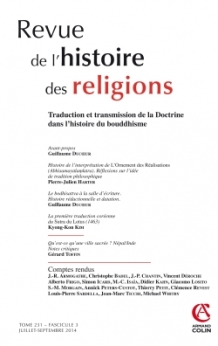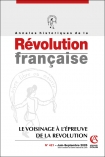
Revue de l'histoire des religions (3/2014)
Pour acheter ce numéro, contactez-nous
Recevez les numéros de l'année en cours et accédez à l'intégralité des articles en ligne.
Le document coréen Myobŏb ryŏnhhwa’gyŏng, qui contient la première traduction coréenne intégrale du célèbre Miaofalianhuajing de Kumārajīva (344-413) et celle du Miaofalianhuajing yaojie, commentaire du moine Chan chinois Jiehuan (?-1129?), a vu le jour sous le règne du roi Sejo (règ. 1456-1468) de la dynastie Chosŏn, dans l’intention de revitaliser le bouddhisme et d’affaiblir ainsi ses opposants politiques néoconfucéens. Ce document inconnu à l’extérieur de la Corée reflète, cependant, des aspects fondamentaux du bouddhisme coréen du XVe siècle, qui perdurent jusqu’à nos jours, notamment la réception quasi systématique de la terminologie bouddhique chinoise, la prédominance de l’esprit oecuménique et la primauté de la voie du Sŏn/Zen.
The Korean document Myobŏb ryŏnhhwa’gyŏng contains the fi rst complete Korean translation of two Chinese texts, the famous Miaofalianhuajing by Kumārajīva (344-413) and the Miaofalianhuajing yaojie, an associated commentary by Jiehuan, a Chan monk from the Song period. This publication was initiated by King Sejo of the Chosŏn dynasty (1392-1910), who intended to revitalize Buddhism in order to weaken his neo-Confucian political opponents. This document, largely unknown outside Korea, refl ects some essential aspects of Korean Buddhism in the 15th century which continue to this day, notably the almost systematic reception of the Chinese Buddhist terminology, the predominance of the ecumenical spirit, and the primacy of the Zen way.

